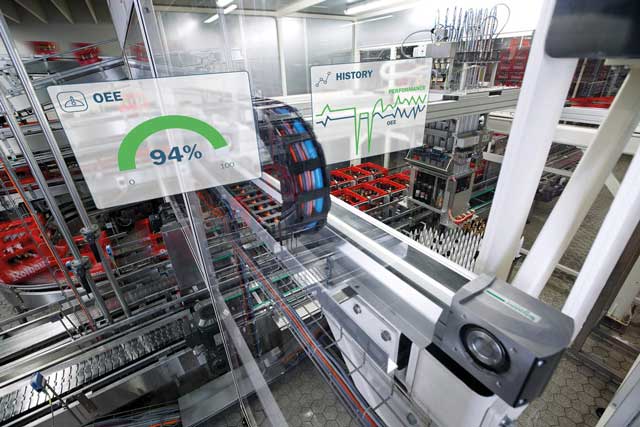 Overall equipment effectiveness is a powerful tool for analysing manufacturing processes and identifying the ‘big six’ losses, says Nathan Ghundoo, product marketing manager at Schneider Electric
Overall equipment effectiveness is a powerful tool for analysing manufacturing processes and identifying the ‘big six’ losses, says Nathan Ghundoo, product marketing manager at Schneider Electric
Often productivity is strongly linked to labour. In other words, productivity is often measured in terms of a worker’s output. However, in manufacturing industry, productivity is increasingly a reflection of a worker’s skill in keeping the automation system is running to its maximum potential.
Manufacturers are well aware of the impact that poorly-performing equipment can have on overall productivity. The ultimate measure of analysis of productivity and efficiency is overall equipment effectiveness (OEE). Its definition is simple: OEE = availability × performance × quality. That is, it is the product of availability (the actual running time as a proportion of planned cell production time) multiplied by performance (pieces produced as a proportion of theoretical output) multiplied by quality (good items as a proportion of total output). OEE demonstrates how small inefficiencies can have much larger consequences further down the value chain.
OEE was originally introduced to counter losses in productivity in the automotive sector. These are summarised as the “big six losses”. They are: unscheduled downtime (breakdowns), changeovers (set up and adjustment), idling and minor stops, reduced speed, quality loss (such as start-up losses) and production rejects (scrap and rework). Ultimately, all manufacturers experience these daily impacts on production. However, inaccurate accounting means that they often go unnoticed.
The world’s most efficient manufacturers aim to achieve a realistic target for OEE of around 85%, which seems relatively low until you remember that even if each of the three factors achieves a score of 90%, the OEE figure will be only 73%. In reality, most manufacturers struggle to gain OEE scores of 60%.
OEE can be highly effective in assisting in highlighting repetitive causes of capacity loss and inefficiency. But for it to be effective, manufacturers need to collect and analyse a significant amount of data relating to production – often in real time.
It’s not enough to gather the data into a series of spreadsheets and look over them once a quarter. Gathering data in spreadsheets is prone to errors and is labour intensive, thus affecting productivity. Therefore, implementing industrial internet of things devices can be an effective solution.
Because manufacturers work with new and inherited machines, the task of gathering OEE data automatically can be daunting. However, with low cost, easy to install wireless IIoT devices now available, it has never been easier to fit switches and sensors to collect production data. This data can easily be fed into local or cloud OEE analysis software which will remove the need for heavy data manipulation in Excel.
OEE isn’t just a technique for large enterprises searching for marginal gains. It’s a tool that even the smallest manufacturers can harness to bring about transformative benefits. The New Belgium Brewing Company, for example, managed to decrease downtime by more than 50% by using a digital performance management tool which provided valuable insights into the causes of downtime.
In spite of successes like this, many manufacturers are failing to adopt lean management principles and techniques that would greatly improve the efficiency of their manufacturing processes, resulting in further benefits down the supply chain. One of the obstacles manufacturers face is that many smaller businesses continue to rely on data trapped in spreadsheets – that is, if they are monitoring OEE at all.
If companies are serious about competing effectively, reducing costs and boosting efficiency, then OEE is an important starting point. It’s not, however, the destination: to gain a full picture of manufacturing efficiency, businesses need advanced performance monitoring tools that provide comprehensive and up-to-the-minute data on everything from production logistics and planning, through to quality operations and maintenance activities.
Although advanced performance monitoring may be the goal, for those businesses with limited scope for capital spending, this can often be out of reach. But those businesses can still opt for a lightweight cloud solution to start with and then reinvest the savings to build up their systems in a tiered approach.
It’s time for manufacturers to start unpicking the productivity problem – and it begins by embracing and implementing OEE.

